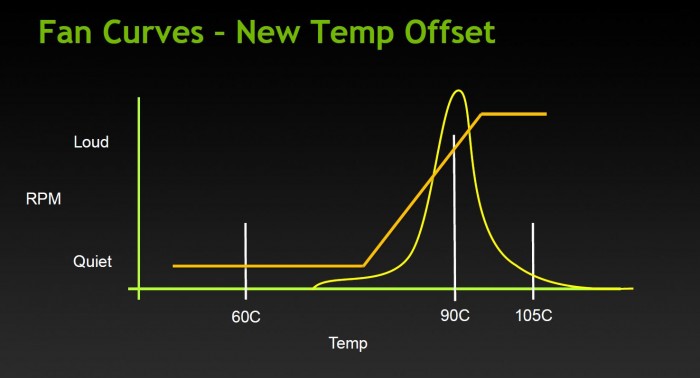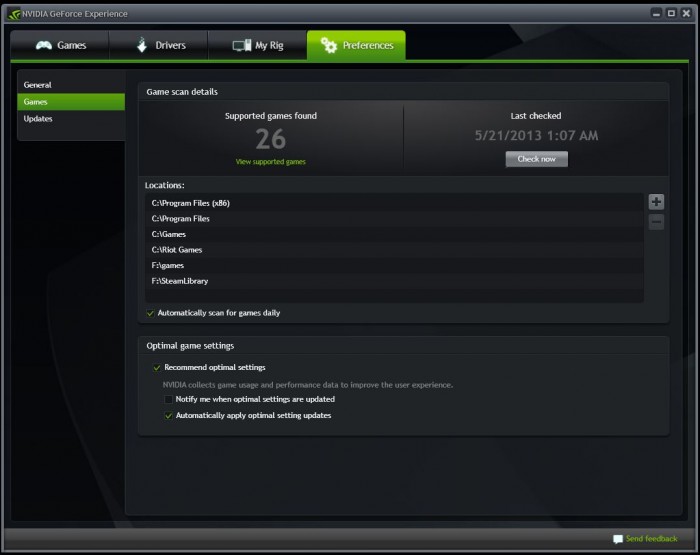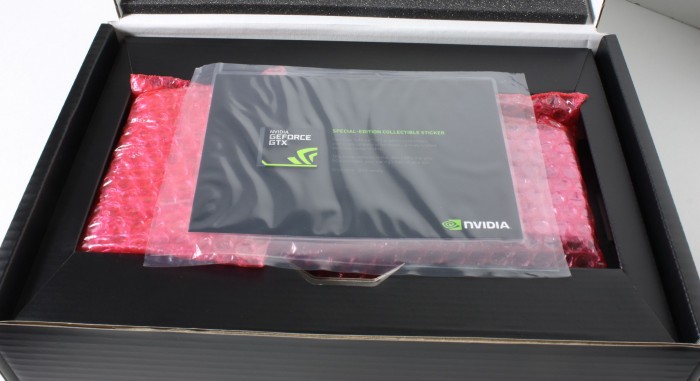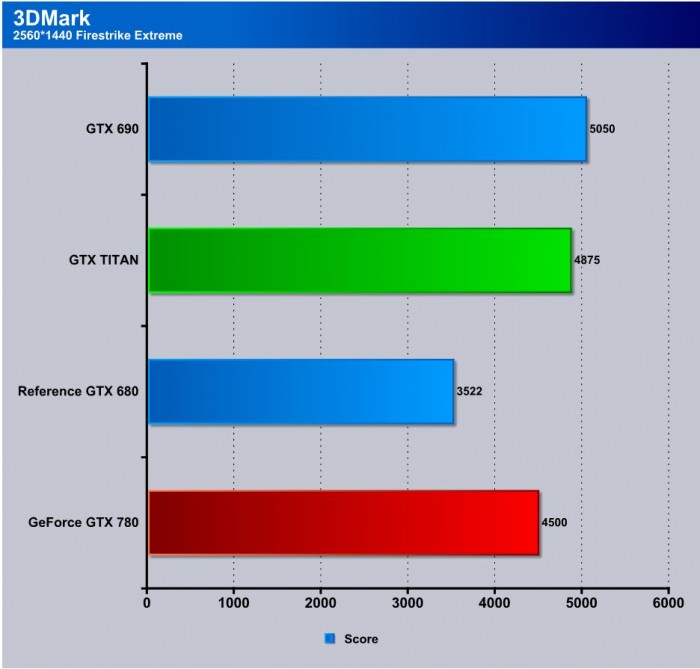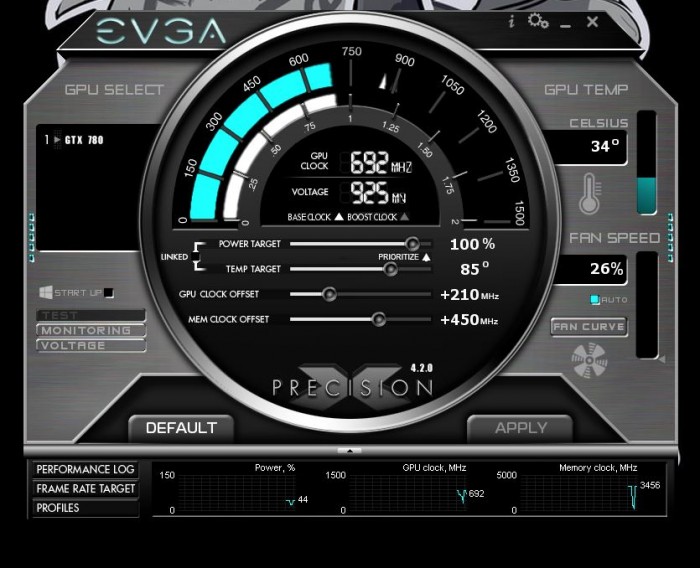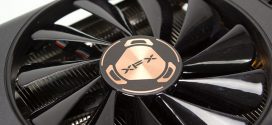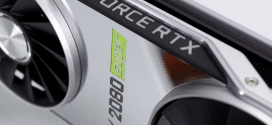The next step in the evolution of GeForce has arrived. Let’s meet the first member of the GTX 700 series: the GeForce GTX 780.
Nvidia GeForce GTX 780
Last year around March we took our first look into the new Kepler based architecture. The GTX 680 was launched to much fanfare from the enthusiast crowd. The launch saw the introduction of several new technologies, and a huge boost in graphics computing power from the 580 series due in part to the introduction of the new Kepler architecture.

The GK110 Kepler Architecture
When it comes to the GPU the GK110 was originally employed on powerhouse server based processing systems designed for huge calculations and other ops where a GPU can provide huge performance. We first saw the GK110 as a consumer level part in the GTX TITAN, which was even still not the full GK110 you would see on a Tesla K20.
The GTX 780 sports GK110 that is just a little less than a TITAN as well; the TITAN will be the top end flagship single GPU card for the foreseeable future.
Whereas the TITAN had 2688 CUDA cores, the GTX 780 comes with 2304. While this may seem like a drastic drop, it still has the potential to be a very capable card just by pure spec. There is no denying that this is simply a cut down version of the TITAN sporting half the memory, but in reality when you look at what the card is, it really is a step up.
Here you can see some of the specs of the card compared to what is offered presently from the Kepler lineup.
| GTX 690 | GTX TITAN | GTX 680 | GTX 780 | |
| Stream Processors | 1536 x 2 | 2688 |
1536 |
2304 |
| Texture Units | 128 x 2 | 224 | 128 | 192 |
| ROP’s | 32 x 2 |
48 |
32 | 48 |
| Base Core Clock | 915MHz | 837MHz | 1006MHz | 863MHz |
| Boost Clock | 1019MHz | 876MHz | 1058MHz | 900MHz |
| Memory Clock | 6008MHz | 6008MHz | 6008MHz | 6008MHz |
| Memory Interface | 256-bit x 2 | 384-bit | 256-bit | 384-Bit |
| Memory Qty | 2GB x 2 | 6GB | 2GB | 3GB |
| TDP | 300W | 250W | 195W | 250W |
| Transistors | 3.5B x 2 | 7.1B | 3.5B | 7.1B |
| Manufacturing process | 28nm | 28nm | 28nm | 28nm |
| Price | $999 | $999 | $499 | $649 |
In terms of product positioning, it’s important to realize that this card is not destined to replace the TITAN, or even to compete with it. Rather, the GTX 780 is the start of the 700 series or figure the next step above the existing GTX 680. With these specs, that is one big step. The price point puts us a little above what GTX 680 launched at, with an expected MSRP of $649. It does sound a bit rich for some gamers, but then again, that’s why there are multiple models from the most extreme (TITAN/690) to the more budget friendly but still quite powerful midrange (650 Ti).
Cooler
We all know that Kepler introduced a whole new set of cards that ran faster and quieter than before. With the introduction of the TITAN and its new style cooler things got even better as cooling efficiency is very good while the fan design and fan control algorithm makes for a card you can rarely ever hear, even in the most strenuous situations.
Here you can see how with the new cooler and also the new fan control implimentation Nvidia is setting this up to be a real quiet ultra gaming card. The ability to avoid the constant ramping of the fan drastically lowers the noise level of the fan, is which is what this is all about. Nvidia wants these cards to be able to play in any system, even in a bedroom with the bare minimum of noise while still offering class leading performance.
Faster
One of the key things to remember is that with any new card series launch, the golden ticket is getting better overall performance. Nvidia wants to make sure gamers know what they are getting in the new GTX 780 card. As you can see by the chart supplied from Nvidia the GTX 780 is 70% faster than the GTX 580 which many gamers still employ and even a stated 42% over the existing GTX 680. That is no joke since the GTX 680 is a very nice card and capable of running most games flat out at highest settings, so with that we know the GTX 780 has some serious horsepower at play here. Also the extra Gigabyte of VRAM I think was an excellent choice as many games are heading toward heavier texture loads and using up more of the VRAM with setting cranked all the way up.
Existing and improved Kepler features
GPU Boost 2.0 -Thermals
We first saw GPU Boost 2.0 on TITAN and now we see it introduced on the GTX 780 which is a good thing as it adds even more capability to the overclock-ability of the cards.
The GPU boosting function is controlled largely by the GPU temps, which by default means the GPU will boost volts and clocks up until the thermal target of 80 C is reached. What is nice about this is that the user can control the thermal target, so if you are fine with your card loading up to 90C, you can raise the target temp to allow for even more overclock and even voltage headroom.
GPU Boost 2.0 – Voltage
Nvidia has employed GPU boost for some time and in simple terms it allows the GPU to overclock itself in situations where there is extra thermal and voltage headroom to spare. This was quite a good feature, but clocks could in some cases be rather erratic and varied greatly depending upon operating environment. Nvidia introduced the newest iteration of the GPU boost feature in TITAN, including a new way to control your card. In the new version, boost clock and voltage levels are directly tied to GPU temps, and therefore voltages can be pushed higher than before. Previously, some GTX680 models did not have a lot of voltage control options. Nvidia corrected this oversight by opening up the GPU Boost 2.0 to enable higher overvoltage options. As you can see, you have the standard boost clock which can already go higher with the sliding scale of the thermal targets, and then you factor in the higher level overvoltage, leading to an amazing amount of headroom.
Nvidia Display Overclocking
Another cool feature from Nvidia is the ability to overclock the display, which means you can push your display to higher refresh rates for even smoother performance from a display that normally may only be at 60Hz. One word of caution: not all displays will support the overclock, and there will likely be a limit as to how far they can be pushed so it will take a bit of trial and error to find where your display is happy at.
Video Encoding
Kepler features a dedicated H.264 video encoder called NVENC. Fermi’s video encoding was handled by the GPU’s array of CUDA cores. By having dedicated H.264 encoding circuitry, Kepler is able to reduce power consumption compared to Fermi. This is an important step for Nvidia as Intel’s Quick Sync has proven to be quite efficient at video encoding and the latest AMD HD 7000 Radeon cards also feature a new Video Codec Engine.
Nvidia lets the software manufacturers implement support for their new NVENC engine if they wish to. They can even choose to encode using both NVENC and CUDA in parallel. This is very similar to what AMD has done with the Video Codec Engine in Hybrid mode. By combining the dedicated engine with GPU, the NVENC should be much faster than CUDA and possibly even Quick Sync.
- Can encode full HD resolution (1080p) video up to 8x faster than real-time
- Support for H.264 Base, Main, and High Profile Level 4.1 (Blu-ray standard)
- Supports MVC (multiview Video Coding) for stereoscopic video
- Up to 4096×4096 encoding
According to NVIDIA, besides transcoding, NVENC will also be used in video editing, wireless display, and videoconferencing applications. NVIDIA has been working with the software manufacturers to provide the software support for NVENC. At launch, Cyberlink MediaExpresso will support NVENC, and Cyberlink PowerDirector and Arcsoft MediaConverter will also add support for NVENC later.
Adaptive VSync
Click on the Images to View a Larger Version
Improved Software Experience
Nvidia supplied us with some really cool software and also showed us some cool stuff that we can now show off to all of you!
GeForce Experience
Here you can see the GeForce Experience program, which is actually a very cool free software for GeForce users. Once you install the program it will scan your system hardware and all installed games, and then optimize your game settings for the best experience.
This may not seem like much, but think of it this way: When you go in and just crank up the settings, are you really running the game the best that your system can? Most likely not. The GeForce Experience program is a better alternative to guessing which settings will provide a balance of performance and eye-candy. This automatically sets up your system to run well, so you don’t have to.
Do note that the GeForce Experience software has been out for BETA for some time, but as of now is moving into full user ready state.
GeForce Experience – Shadowplay
Many of us have used various different forms of recording software such as FRAPS to show our gameplay to the world. But anyone who has done this knows the limitations, as the files quickly get huge and can take up a lot of disk space very quickly.
Nvidia will be adding a feature to the GeForce Experience called ShadowPlay which is a game recording software but with a very special capability. It uses the NVENC native H.264 encoder on the Kepler based GPUs to encode the gameplay footage in real time so that the files are smaller right from the start and quality remains excellent.
The Shadowplay software is expected to be publicly available around summer 2013, so we figure a few months and we can give this thing a run.
A Closer Look at the GTX 780
Click Images to Enlarge
Much like we saw with the 680, the GTX 780 shows up in its black elegant style with a bit of reflective love to let you know something special is going on inside. Even still, we honestly don’t think the packaging does justice to what we know is lurking in the box. We were surprised at the limited edition Nvidia badge inside the package. Nvidia specifically states that this badge should not be stuck to siblings or pets, though the instructions say nothing about wives. Perhaps we’ll give that a try and see if we survive the reprisal.
Click Images to Enlarge
Removing the product and its several protective bags reveals the card itself. If it were not for the GTX 780 markings, we could have easily mistaken it for a TITAN, as it carries the same style cooling solution across the two models. Also across the top is the back lit GeForce GTX logo, and is now controllable via the EVGA Light software.
Click Images to Enlarge
Looking at the power connections shows us something we have seen before: the top and front facing 8 pin solder pads, which tell us that this PCB could be shared with a workstation unit or even high end Tesla card. This is good for so many reasons, the first being the fact that Tesla cards are built for serious work and built for very strenuous situations. This means that no matter what you throw at the 780 in a gaming rig it will just laugh and keep on going.
Click Images to Enlarge
The top of the card houses the all too familiar dual SLI bridge connectors which allow for full 3-Way or even 4-Way SLI functionality. These would permit a system to scale well beyond a single GPU’s performance potential, should a game require it (Crysis 3 and Metro: Last Light come to mind here).
The display connectivity is about standard for what we have seen on the Kepler based lineup
- 2x DVI
- 1x HDMI
- 1x Displayport
This all digital connector arrangement allows for maxing out the GPU with up to 4 displays and even a surround plus accessory display array should the need arise.
Click Images to Enlarge
The back of the card is where things start to come clearer. The big difference here is that unlike the TITAN, the rear of the 780 is devoid of memory chips. This exactly halves the memory, for 3GB of memory in comparison to the the 6GB on the TITAN. Note that unlike the 680, the 780 does not have the mini PCB voltage controller attached to the rear as it is placed under the cooler, which we feel is a much better placement, so as to be able to effectively protect those sensitive components.
Click Images to Enlarge
And here after popping the top we get a nice look at the naked card and GPU. Everything is laid out very similarly to the TITAN; as a matter of fact, it looks exactly like the TITAN card. We are interested to see if any manufacturers will utilize this base PCB design and add the extra 8 pin to the front of the card for a special high end overclocking model, though honestly we could not see the card/GPU using that much power through the stock VRM even under extreme cooling.
Testing Methodology
The OS we use is Windows 8 Pro 64bit with all patches and updates applied. We also use the latest drivers available for the motherboard and any devices attached to the computer. We do not disable background tasks or tweak the OS or system in any way. We turn off drive indexing and daily defragging. We also turn off Prefetch and Superfetch. This is not an attempt to produce bigger benchmark numbers. Drive indexing and defragging can interfere with testing and produce confusing numbers. If a test were to be run while a drive was being indexed or defragged, and then the same test was later run when these processes were off, the two results would be contradictory and erroneous. As we cannot control when defragging and indexing occur precisely enough to guarantee that they won’t interfere with testing, we opt to disable the features entirely.
Prefetch tries to predict what users will load the next time they boot the machine by caching the relevant files and storing them for later use. We want to learn how the program runs without any of the files being cached, and we disable it so that each test run we do not have to clear pre-fetch to get accurate numbers. Lastly we disable Superfetch. Superfetch loads often-used programs into the memory. It is one of the reasons that Windows Vista occupies so much memory. Vista fills the memory in an attempt to predict what users will load. Having one test run with files cached, and another test run with the files un-cached would result in inaccurate numbers. Again, since we can’t control its timings so precisely, it we turn it off. Because these four features can potentially interfere with benchmarking, and and are out of our control, we disable them. We do not disable anything else.
We ran each test a total of 3 times, and reported the average score from all three scores. Benchmark screenshots are of the median result. Anomalous results were discounted and the benchmarks were rerun.
Please note that due to new driver releases with performance improvements, we rebenched every card shown in the results section. The results here will be different than previous reviews due to the performance increases in drivers.
Test Rig
| Test Rig | |
| Case | Test Bench |
| CPUs | Intel XEON E5-2687W |
| Motherboards | ASUS Rampage IV Extreme |
| Ram | Kingston HyperX Beast 64GB (8x8GB) 2133Mhz 11-12-11 Quad-Channel Kit |
| CPU Cooler | Custom Liquid Cooling |
| Hard Drives | 8x Western Digital RE4 2TB 7200RPM 3Gb/s Hard Drives (Raid 5) |
| SSD | 3x Kingston HyperX 240GB SATA III 6Gb/s SSD |
| Optical | ASUS DVD-Burner |
| GPU | Nvidia GeForce GTX 780 3GB Video Card
Nvidia GeForce GTX 680 2GB Video Card Nvidia GeForce GTX TITAN 6GB Video Card Nvidia GeForce GTX 690 4GB Video Card |
| GeForce Drivers |
320.14 (GTX 680, 690 and TITAN) 320.18 (GTX 780) |
| PSU | Thermaltake Toughpower XT 1475W Gold |
| Mouse | Tt eSPORTS Theron Gaming Mouse |
| Keyboard | Tt eSPORTS Meks G1 Illuminated |
Synthetic Benchmarks & Games
We will use the following applications to benchmark the performance of the Nvidia GeForce GTX 780 video card.
| Benchmarks |
|---|
| 3DMark 11 |
| 3Dmark 2013 |
| Crysis 3 |
| Far Cry 3 |
| Metro 2033 |
| Unigine Heaven 4.0 |
| Batman Arkham City |
| Dirt 3 Showdown |
| Metro Last Light |
| Sniper Elite V2 |
3DMark 11
Here you can see in 3DMark 11 that the GTX 780 pulls a nice lead of just under 21% over GTX 680 while on the standard performance preset it pulls a little over 15%. This tells us that this card is more adept at the higher end side of things than running along at lower res and crunching out frames.
3DMark 2013
In 3DMark Firestrike the standard 1920×1080 res score nets us just under 20% over the 680, and not too far off of the TITAN. Changing things up to the more demanding 2560×1440 Firestrike Extreme testing, the lead above 680 hits just below 22% and the 780 gets even closer to TITAN here.
Unigine Heaven 4.0
Unigine Heaven is a benchmark program based on Unigine Corp’s latest engine, Unigine. The engine features DirectX 11, Hardware tessellation, DirectCompute, and Shader Model 5.0. All of these new technologies combined with the ability to run each card through the same exact test means this benchmark should be in our arsenal for a long time.
Heaven shows some nice performance from the GTX 780 as it pulls a solid 51 FPS which puts it around 25% faster than the 680 and a minute over 5% slower than TITAN.
Far Cry 3
Moving over to Far Cry 3, we used a pre determined path and re-ran each card to monitor average FPS across the complete run. Each run was completed multiple times to ensure continuity and accuracy. Here the 780 pulls a 19% lead over 680 and surprisingly pulls to within 3% of the TITAN.
Metro 2033
Even after many years, Metro 2033 is still one of the most demanding DX11 video games available to really push the limits of your system. Here it shows once again a 25% increase going from 680 to 780, and another 7% or so improvement going to TITAN. The 690 yields the highest score obviously, as it is a multi-GPU card.
Batman Arkham City

Batman Arkham City is a fun game and utilizes FXAA fully. It is nice to see the full screen anti-aliasing getting picked up by popular titles. When it comes to performance the 780 makes a good showing, with the GK110 pumping out a 10% increase over the 680 while only falling a little over 1% behind the TITAN in gameplay performance. This game is Nvidia optimised, so it definitely sees the 690’s SLI capability and exploits it well, adding a nice chunk of performance here.
Crysis 3
Crysis 3 is much like the original Crysis in that playing it at max settings is painful for even the highest end hardware. The GTX 780 pulls a solid over 30FPS run averaging over 34FPS which means pretty smooth gameplay for max setting details. This places the 780 about 21% above 680 here and almost 8% behind the TITAN and even more behind 690.
Metro Last Light
Here we have Metro Last Light which is a brand new game added to our testing platform as it just came out. If you thought Metro 2033 was stressful you have seen nothing yet. The particles and lighting, as well as the PhysX effects all add up to an amazing looking game that can put a stun even the most powerful system in its tracks. Here the GTX 780 averages 36 FPS which is enough to give it a 17% lead over the outgoing GTX 680 and puts it just on the heels of the TITAN again at just under 4% below TITAN’s performance numbers.
Sniper Elite V2
Sniper Elite V2 is a fun game which, when first released, was quite stressful but still playable on most higher end cards. By now, most cards have surpassed it, and all of the cards we are testing here today break the 100 FPS mark. The 780 yields a 14% performance increase over 680, but it does fall a bit off against the TITAN, which outstrips it by 9%. Surprisingly, the TITAN even beats the double-GPU 690 in this test.
Dirt 3 Showdown
Dirt 3 Showdown is a visually beautiful game with excellent lighting and overall motion blurring creating a real visual spectacle of a game. Here the 780 takes a commanding lead over the 680 at just under 18% and a spot about 7% behind TITAN while the 690 walks away easily as this game can utilize multiple GPUs without being capped by the 2GB Framebuffer.
Overclocking
The new Kepler Architecture with GPU boost has been a bit of a bear when it comes to pushing the clocks. This is due to the throttling mechanisms put in place and the fact that it dynamically clocks. Unlike 500 series where we could set a static clock and it just applied the card, Kepler clocks according to many variables, which means that much more care must be shown when applying overclock settings and even monitoring it during the run.
Things such as the thermal target can play a big role in stone walling your performance during an overclock session as everything has to be adjusted accordingly to ensure expected performance levels are met.
As you can see here that with a little tweaking we took the base clock from 863MHz to 1073 which netted an actual boost clock of 1201MHz dynamically with the thermal target set to 85C. Now mind you even though the thermal target was 85C the GPU saw a max of 82C during any testing with the overclocked settings. This speaks volumes to the coolers capabilities and to how much headrom these cards really have when cooled properly.
Memory was no slouch either jumping from its standard 6Gb speed to over 6900MHz fully stable.
This is excellent results and shows that the time and tuning that goes into the fan control, GPU Boost 2.0 and the card overall has been well thought out to have a card run at 1.2GHz core and barely break into the 80C range and with no voltage adjustment as well.
TEMPERATURES
To measure the temperature of the video card, we used EVGA Precision X and ran Heaven Benchmark in a loop to find the Load temperatures for the video cards. The highest temperature was recorded. After looping for 10 minutes, Heaven was turned off and we let the computer sit at the desktop for another 10 minutes before we measured the idle temperatures.
| GPU Temperatures | Temperature (Idle/Load) |
| Nvidia GTX 690 | 32C/81C |
| Nvidia GTX TITAN | 31C/67C |
| Nvidia GTX 680 |
31C/72C |
| Nvidia GTX 780 | 30C/65C |
The new TITAN style cooler keeps things very cool and even under extended testing was never really audible over standard system fans at all. To be fair the 680 model is a different cooler design and the onesfor the TITAN and 780 are simply newer more efficient designs so the 680 didnt do bad for the hardware it has affixed.
When overclocking and thermal target at 85C the card easily pulled 1200+ MHz on the care while only seeing 82C with the fan on auto setting which means that this cooler is very efficient and could even possibly see more out of it with more time tweaking. I can only hope that Nvidia chooses to use this cooler design on more cards in the future as it simply kicks ass with the proper tuning.
POWER CONSUMPTION
To get our power consumption numbers, we plugged in our Kill A Watt power measurement device and took the Idle reading at the desktop during our temperature readings. We left it at the desktop for about 15 minutes and took the idle reading. Then we ran Heaven Benchmark for a few minutes minutes and recorded the highest power usage.
Here we have our full system load numbers and as you can see the cards pull a decent amount of power and the 680 with its dual 6 pins pulls the lowest overall loaded number. With the extra memory and stronger GPU both the TITAN and the 780 pull about 30-37 more watts under full load than the 680 but what really surprised me was that at idle the GTX 780 pulled the lowest wattage by almost 10 watts.
Our Final Thoughts
And yet again Nvidia dresses to impress with an amazing card with huge capability. This by far is the best sub-800 dollar single GPU card on the market today and even comes close to the $1000 GTX TITAN which is quite a feat alone. This shows that Nvidia knows what gamers wants and is willing to deliver in one awesome package with teh intro of the GK110 into the consumer lineup things just got really interesting. Add to this the idle low load power efficiency and the GTX 780 is set to be the new rockstar of high end gamers everywhere as AMD still is having a tough time pulling such numbers from their side of the fence although admittedly we have not seen the 8000 series crop up yet so we will have to just wait and see on that one.
The overclocking potential of the GK110 is very good to begin with, and with the introduction of GPU Boost 2.0, it gets even better. Add to this the new fan profiling used to maximize a smooth fan control without the constant jumping we have seen previously and it also adds to being a very quiet solution as the fan ramping is simply not as noticeable. The ability to hit over 1200MHz on the care with a thermal target of 85C and only seeing 82C max loaded temps is something that still to this very moment amazes me. We are also very excited to see what other manufacturers will do with their custom designs.
But this is not telling the whole story as Nvidia has gone about releasing many new items to improve not just the gameplay but the overall experience of the play with its aptly named GeForce Experience software. This software makes tuning your games for the best possible experience during gameplay as simple as a single click. This once again may not seem like much help but when you think about setting each game up and actualy setting it up correctly for the hardware you are using, it is harder than it may seem as you can quickly set things up incorrectly, causing suboptimal gameplay experience which is what Nvidia is trying to help avoid.
On top of the GeForce Experience there is also the new Shadowplay feature which gamers should see popping up in the coming months which allows gameplay recording at HD quality while using the embedded H.264 encoder within the Kepler GPU to allow real time encode operations for smaller file sizes and less overall system load during gameplay for your game recording needs. This is a really cool feature as for those gamers running a smaller SSD space is at a premium and having a fast drive to constantly write video data to is a must so if you use a standard option such as FRAPS you know how quickly those video files can eat up space.
With all that considered, at an MSRP of $649, the Nvidia GeForce GTX 780 is a very capable card with an awesome level of performance but the price can sting a bit for those without lots of money to spend.
 Bjorn3D.com Bjorn3d.com – Satisfying Your Daily Tech Cravings Since 1996
Bjorn3D.com Bjorn3d.com – Satisfying Your Daily Tech Cravings Since 1996








